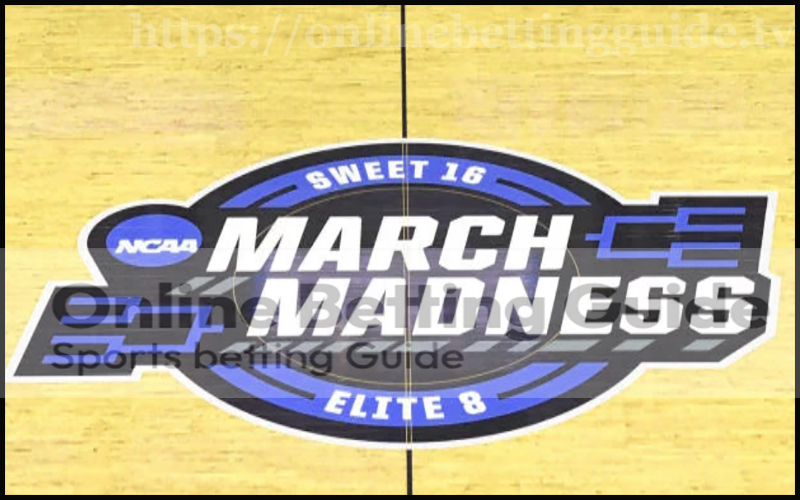The NCAA Tournament, fondly known as March Madness, is a vibrant battleground for college basketball teams and betting enthusiasts. As the tournament progresses into the Sweet 16 and Elite Eight rounds, the stakes increase and the enthusiasm intensifies.
In this crucial phase, smart bettors can leverage historical betting trends to make well-informed choices.
While past performance doesn’t guarantee future outcomes, understanding these trends can offer valuable insights that can make a difference between a winning bet and a losing one.
A #1 Seed Will Fall
The Final Four is the ultimate destination for any team in the tournament. Yet, history has shown that the top-seeded teams (designated as #1 seeds) sometimes have a free pass. Over the last 36 years, only once has the Final Four comprised all four #1 seeds, occurring in 2008. This rarity underscores the importance of considering the potential for upsets in the later rounds.
Dominance of #1 Seeds in Sweet 16
Since 2014, the #1 seeds have showcased their supremacy in the Sweet 16, winning an impressive 19 out of their last 22 games. This surge underscores their ability to navigate this critical juncture of the tournament. Notably, this doesn’t imply that all #1 seeds make it to the Sweet 16, but they’ve exhibited remarkable performance when they do.
A Mixed Bag for #1 Seeds in the Elite Eight
The Elite Eight is a decisive step toward the Final Four, and here, the #1 seeds exhibit a more nuanced performance. Since 2012, they’ve posted a combined 14-10 record in the Elite Eight. This suggests that while they remain strong contenders, they’re not invincible.
At Least One #1 Seed Reaches the Final Four
While striking a balance between prudence and risk-taking is vital, history indicates that having at least one #1 seed in the Final Four is common. Only two instances in the past have seen a Final Four without any #1 seeds, emphasizing their consistent presence in the culmination of the tournament.
Reality Check for #12 Seeds in the Sweet 16
The phenomenon of #12 seeds outperforming expectations early in the tournament is well-documented. However, their prowess takes a sharp downturn in the Sweet 16, where they hold a 2-20 overall record and a daunting 0-20 record when they face #1 seeds. This suggests that while they might be bracket-busters in the opening rounds, they face an uphill battle against stronger opponents.
#7-#11 Seeds are Live Dogs
March Madness thrives on Cinderella stories, and the #7 to #11 seed range often fuels them. Since 2011, at least one team from this range has consistently reached the Final Four, underscoring their ability to upset higher-seeded opponents and extend their runs.
The #2 Seeds’ Mastery Against #3 Seeds in the Sweet 16
In the Sweet 16 matchups, where #2 seeds face off against #3 seeds, the former has displayed dominance, boasting a 30-17 record. This trend highlights their aptitude for handling slightly lower-seeded rivals.
#2 Seeds’ Battle Against #1 Seeds in the Elite Eight
The Elite Eight stage witnesses a balanced tussle between #1 and #2 seeds. The #2 seeds hold a 50/50 record against their higher-seeded counterparts, underlining the competitiveness of these encounters. In the last ten meetings, #2 seeds have maintained a 7-4 edge, suggesting their consistency in challenging #1 seeds.
The Elusiveness of #6 Seeds in the Final Four
Since 1992, the Final Four has been bereft of #6 seeds, with the last such instance occurring with the 1992 Duke Blue Devils. This rarity points to the formidable competition faced by these mid-level seeds.
Rarity of #9 Seeds in the Final Four
In the expansive history of the NCAA Tournament since its 1985 expansion to 64 teams, only the 2013 Wichita State Shockers, led by Fred Van Vleet and Ron Baker, have defied the odds as a #9 seed to reach the Final Four. Their exceptional feat underscores the challenges these lower-seeded teams face in progressing deep into the tournament.
Blue Bloods Get the Job Done
Certain powerhouse teams, often called “Blue Bloods,” have consistently shown their might in the tournament. Duke and North Carolina lead the way with the most Final Four appearances since 1985. This historical perspective highlights their enduring basketball excellence.
BYU, Xavier, and Missouri’s Hurdles
The journey to the Final Four has eluded specific teams despite their regular appearances in the tournament. BYU, Xavier, and Missouri share the record for the most tournament appearances without reaching the Final Four. Their near misses and challenges in breaking through underscore the highly competitive nature of March Madness.
March Madness isn’t just about basketball; it’s a grand arena for strategic betting. While these trends provide valuable insights, they should be viewed as guides rather than certainties. The dynamics of each year’s teams, matchups, and surprises make the tournament thrillingly unpredictable.
As betting enthusiasts gear up for the Sweet 16 and Elite Eight rounds, embracing the current tournament’s historical context and evolving narratives will undoubtedly enhance the excitement of the March Madness experience.
